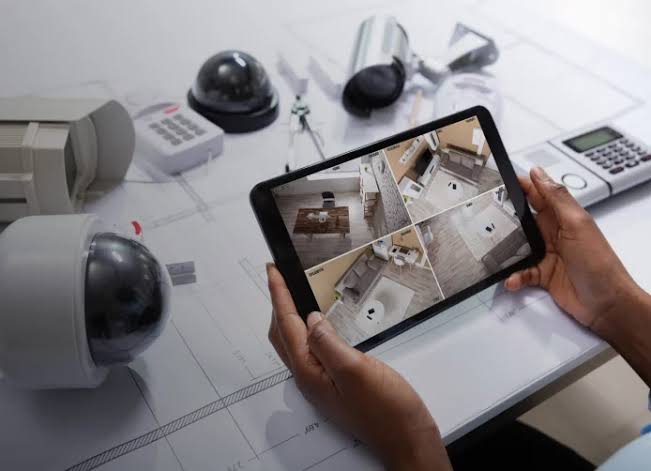CCTV SURVEILLANCE
CCTV (Closed-Circuit Television) is a system can help deter crime, monitor activities, and provide evidence if needed. They typically consist of cameras, recording equipment, and display monitors. Modern CCTV systems often include features like motion detection, night vision, and remote viewing capabilities through internet-connected devices.
CCTV systems consist of several components:
1.Cameras: These capture video footage. They come in various types such as dome cameras, bullet cameras, and PTZ (pan-tilt-zoom) cameras. Some are equipped with night vision or infrared capabilities for low-light conditions.
2.Lenses: Lenses determine the focus and clarity of the images captured by the cameras. Some cameras have fixed lenses, while others have varifocal lenses that allow zooming in and out.
3.Cabling and Connectors: These are necessary for transmitting the video signals from the cameras to the recording devices. Coaxial cables or more modern alternatives like Ethernet cables (used in IP camera systems) are typically used.
4. Monitors: These display the live or recorded footage. Monitors can be computer screens, TVs, or dedicated security monitors.
5.Recording Devices: Digital Video Recorders (DVRs) or Network Video Recorders (NVRs) store the footage. DVRs are used with analog cameras, while NVRs work with IP cameras.
6.Storage: Hard drives within DVRs or NVRs store the video data. The storage capacity needed depends on the number of cameras, resolution, frame rate, and the desired retention period for footage.
7.Software: Management software helps in viewing, recording, and analyzing footage. Advanced systems may include features like motion detection, facial recognition, and automatic number plate recognition (ANPR).
Applications of CCTV:
Crime Prevention: Deters criminal activities in areas under surveillance.
Traffic Monitoring: Helps manage traffic flow and detect violations.
Public Safety: Monitors public places like parks, streets, and transportation hubs.
Industrial Operations: Ensures safety and monitors processes in factories and industrial sites.
Retail: Prevents theft and monitors customer and employee activities.
Home Security: Protects homes from intruders and allows remote monitoring.
Considerations for Setting Up CCTV:
Coverage Area: Determine the areas that need monitoring.
Camera Placement: Position cameras to cover vulnerable points like entrances and exits.
Legal Compliance: Ensure the use of CCTV complies with local privacy laws and regulations.
Maintenance: Regular checks and maintenance ensure the system functions correctly.
